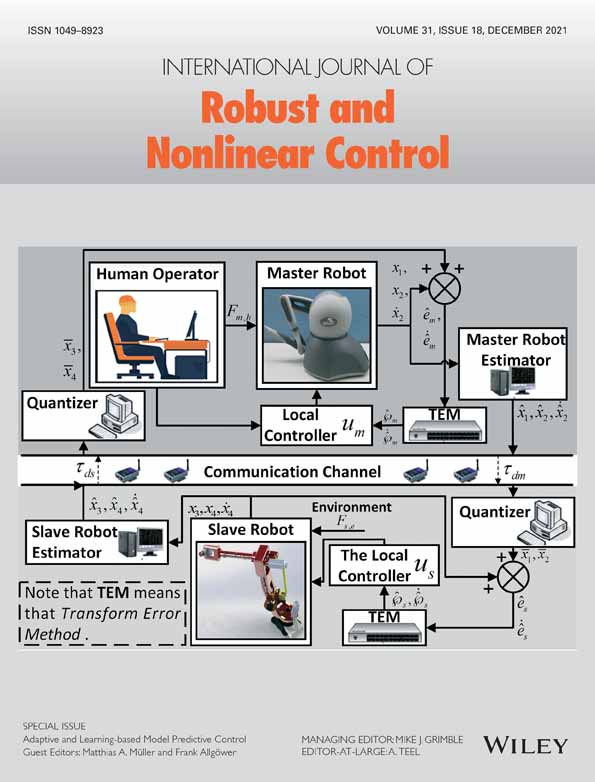Robust model predictive control for hypersonic vehicle with state-dependent input constraints and parameter uncertainty
Funding information: Aeronautical Science Foundation of China, 20180748002; National Natural Science Foundation of China, 61773279
Abstract
In this article, a robust model predictive control strategy based on sum-of-squares (SOS-RMPC) is proposed for hypersonic vehicle with state-dependent input constraints and uncertain parameters. Based on feedback linearization model of hypersonic vehicle, the polytopic linear parameter varying error model with bounded disturbance is established for reference trajectory tracking. The real limits of the actual control inputs are transformed into the constraints of the virtual inputs equivalently with the state-dependent nonlinear functions. Further, the multivariate linear fitting is used to approximate the state-dependent input constraints into polynomials. A weighted composite virtual control is formulated as the combination of unconstrained control and auxiliary control. SOS technique is introduced to cast the polynomial constraints into the convex matrix SOS conditions via linear matrix inequality. The virtual control law can be obtained by solving a SOS-RMPC convex optimization with infinite horizon. The invariant set is designed for the undisturbed error states and the norm-bounding theory is applied to ensure that the predictive error states with disturbance can remain in the same invariant set. The real control law is obtained by inverse control. The simulation verifies the performance of the designed controller.
CONFLICT OF INTEREST
The author declares that there is no conflict of interests regarding the publication of this article.
Open Research
DATA AVAILABILITY STATEMENT
The data that support the findings of this study are openly available in Journal of Guidance, Control and Dynamics at https://doi.org/10.2514/1.27830, Reference 3; and Journal of the Franklin Institute at https://doi.org/10.1016/j.jfranklin.2013.02.012, Reference 22.



 optimal control of polynomial nonlinear systems via sum of squares programming
optimal control of polynomial nonlinear systems via sum of squares programming
